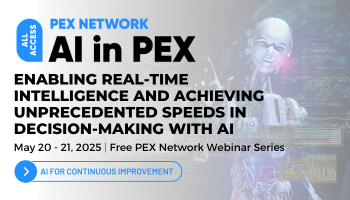Why manufacturers shouldn’t rush into AI transformation
Manufacturing leaders must consider the long-term consequences of AI
Add bookmarkListen to this content
Audio conversion provided by OpenAI

The World Economic Forum (WEF) predicts that the market for artificial intelligence (AI) in manufacturing is expected to grow to US$20.8 billion by 2028. This represents a giant opportunity for product developers and design engineers to find new ways of tackling challenges. One great example of the potential AI offers the sector is the discovery by Google’s DeepMind of millions of new materials that could be created to help meet the burgeoning need for semiconductors. Without AI to analyze the many permutations, this discovery would have taken centuries.
The challenge for manufacturers, however, is where to begin. According to the WEF, 68 percent of manufacturers across all sectors have already implemented some form of AI in their operations, but the direction in which we should be heading is still unclear. Protolabs spoke to three industry experts to gather their views on the best way forward for manufacturers, summarized below. The overall message from all three was that there is an industry-wide need for caution and planning.
Don't miss any news, updates or insider tips from PEX Network by getting them delivered to your inbox. Sign up to our newsletter and join our community of experts.
AI’s value and ethical considerations
An important observation is that too many organizations are allowing their enthusiasm for AI to get the better of them. As Umbar Shakir, partner at digital and business transformation consultancy states, “some of my clients are trying to run before they can walk. While AI presents us with amazing opportunities, not every business problem has an AI-shaped answer.”
A glimpse into how this is affecting the automotive industry was provided by Aric Dromi, former futurologist for Volvo and founder of RETHNK.GROUP. Aric points out that too many companies are starting their AI journey based on what the technology can do, rather than what the need actually is. In the automotive industry, which is already deploying AI quite extensively, user experience still needs to be at the center of new developments, he says. Referring to the development of autonomous vehicles, he reminds us that the infrastructure is still far from complete. “So, before we rush to implement ChatGPT inside our cars, we need to ask why. What is the user going to do? Where is the value that is going to be given to you by having this type of interaction in the vehicle?”
Another concern is that manufacturers may run into trouble if they rush into AI transformation without paying attention to their ethical responsibilities. As Shakir points out, without the right data and processes in place, it’s too easy to amplify the biases that already exist in an organization. The majority of digital data sets accumulated over the last 30 years are far from inclusive, with Umbar warning that these would not be the best source on which to train new machines.
How to seize the AI opportunity
So how should manufacturing businesses go about seizing the AI opportunity? The overwhelming message is“carefully.” Carlos Sentis, founder and CEO of strategic advisory firm Improve X AI, recommends starting with a thorough assessment of the risks and opportunities, focusing only on what’s really going to add value and discarding everything else. “A lot of the problem that comes with innovation is that you don’t know exactly what to say no to.”
Another starting point is to adopt what Shakir calls “everyday AI” – using automation to improve productivity and efficiency and taking time to train AI tools on good quality data. Umbar describes the approach as “craft and graft,” referring not only to the problem-solving “craft” that must involve human emotions and values, but also to the “graft” of data research, analysis and collation that needs to take place if AI implementation is to be robust.
The possibilities for AI in manufacturing appear to be almost limitless, so it’s easy to see why many leadership teams have become caught up in the excitement. Sentis paints some wonderful scenarios of the possibilities that the combination of AI and robotics could bring, including the notion of robots that can expand and contract as required or that could be able to fuse themselves, become liquid and then reform as solids elsewhere.
The truth is, however, that the industry needs to take care to do it right. As Dromi puts it, “if we do want to use AI in a much better way, it needs to be driven by context and intention.” It’s the job of manufacturing leaders to consider the long-term consequences that AI may have and to weigh up what the benefits will be in business and human terms. Above all, we need to make sure that we don’t get carried away by the hype.
All Access: AI in PEX is 2025

All Access: AI in PEX 2025 is designed to address these challenges and empower organizations to successfully integrate AI into their process improvement initiatives. The content series will bring together industry experts, thought leaders, and practitioners to share insights, best practices, and real-world case studies.
Register Now





















